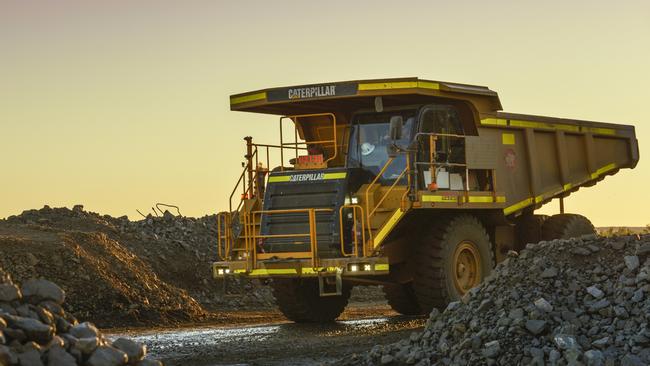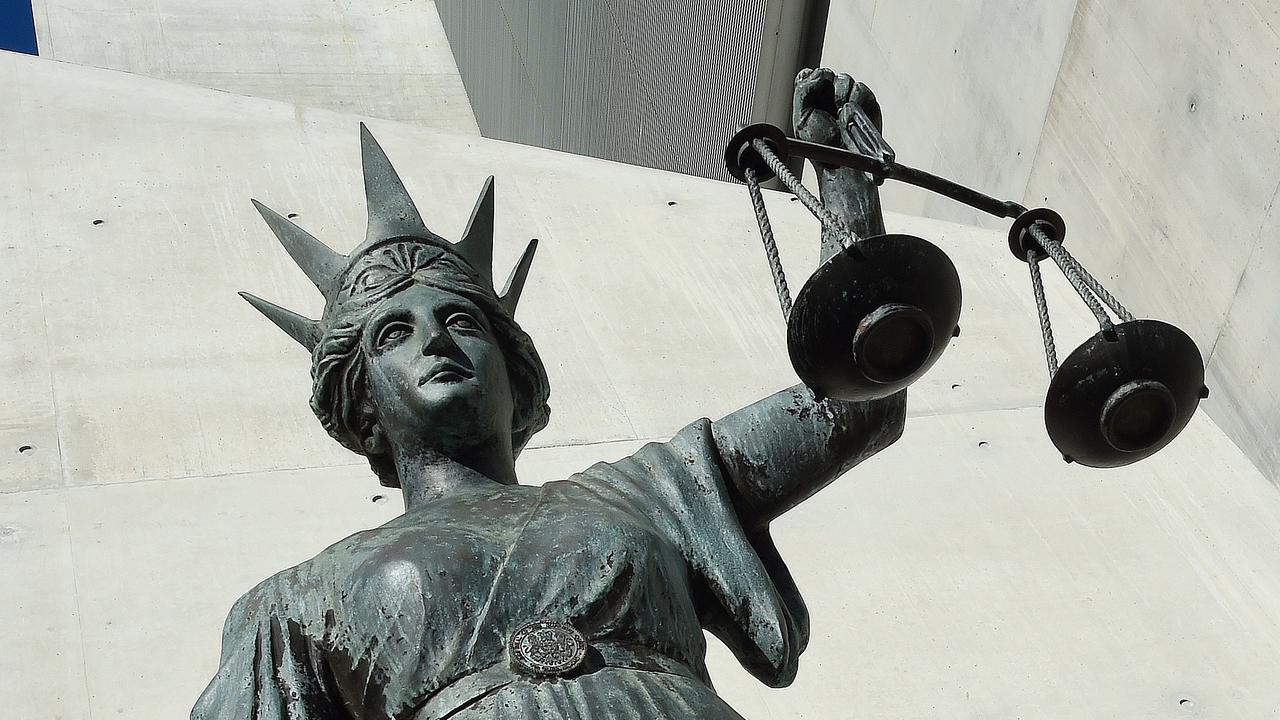The mines that BHP rejected forged their own identity in South32
Nearly a decade on from the messy divorce from BHP, South32 has rebuilt itself. What are the lessons for Anglo American?

Business
Don't miss out on the headlines from Business. Followed categories will be added to My News.
Whether its BHP or Anglo American that wins their stand-off, one of them might want to give Graham Kerr a call.
As the fate of the world’s biggest mining merger comes down to the wire in London, the boss of Australia’s South32 is likely to play a role in the future of either company – depending on how the cards fall.
Anglo is the junior partner in the Samancor manganese venture with mines in South Africa and Northern Territory. Kerr’s South32 is the operator. Manganese is mostly used to strengthen steel for structures like railway tracks and bridges.
However, manganese wasn’t strong enough to be part of Anglo chief’s Duncan Wanblad’s vision for the future, with the metal one of the string of assets earmarked for a fire sale. Nor would Samancor have a place in a world where BHP took control of Anglo under the $64bn buyout.

“There could be an opportunity for us to increase our stake in those (mines). Because we’re the operator, we know better than anyone,” Kerr tells The Australian.
It’s just one way miners are sizing up the post-Anglo world, with BHP stirring the pot enough to force the London miner into shaping itself up. BHP is under pressure to sweeten its $64bn bid. Whoever comes out on top, there’s a flurry of mines from nickel, coal to platinum that are set to hit the market in the coming year.
The mining mega-deal has more than passing interest for Kerr and his $20bn diversified mining house.
Indeed, BHP’s initial approach to Anglo stoked comparison of BHP’s much maligned merger with Billiton two decades ago. There could be lessons too for the fate of Anglo’s unwanted assets if BHP does buy it out.
‘The divorce’
South32 was spun out of BHP in 2015, and it was basically home for the unwanted Billiton operations from zinc, nickel and most of South Africa. As some have joked, if Billiton was the marriage, South32 represented the divorce settlement.
Kerr was the former chief financial officer of BHP and was deeply involved in the creation of South32, including the horse-trading of various mines and operations that would form the base of the new company. In many cases he didn’t get his way, but that didn’t stop Kerr from jumping over to run the new company.
The name South32 was chosen because it represents the latitude line of Perth, where the company was headquartered. Perth too represented the midpoint between Johannesburg and Australia’s east coast, where the spread of operations reached.

It was clear BHP had the run of tier one, world-class mines and South32’s were tier two and fragmented. Under BHP, they had been unloved and even misunderstood. Adding to the tough sell, the bulk of earnings from the new South32 were from coal – both thermal and steelmaking coal.
“There is no doubt there’s an element of those (Billiton) assets in our business. But don’t forget BHP also kept some of their assets as well,” Kerr says. Even so, he acknowledges that ultimately the deal was done “for the benefit of BHP shareholders”.
But Kerr played with the hand he was dealt
“We knew that we started life with a set of assets that weren’t going to be the assets that were going to lead us to success and didn’t have the right commodity exposure.
“We were very clear in the early years, when we spoke about the board and at the leadership team about the strategy was to optimise what we had today, unlock any growth that existed in the existing businesses … but also bring in new growth options to the group.”
Kerr was speaking to The Australian in Sydney as he was about to head back to Perth. It’s been a busy few weeks that’s taken in meeting dozens of investors at the Bank of America global mining conference in Miami last week, briefly crossing paths with BHP’s boss Mike Henry. The week before, he was in South Africa (Henry too has made a dash to South Africa as part of his Anglo charm offensive).
In between all this, Kerr was named a director to the board of the Fremantle Dockers. He will be back in Perth in time for the home ground clash with favourites Collingwood.
Zinc boom
From day one Kerr went about quietly reshaping South32 so it too would be relevant in a future dominated by green energy, EVs and big batteries. A different South32 needed a new mix of commodities, but he didn’t have the balance sheet to compete head-to-head against the global majors of Rio Tinto or former parent BHP.
The reshaping began with the sale of his South African thermal coal mines. This was a business that while it spat out cash was capital hungry. It too had a complicated ownership structure and represented the new company’s largest carbon footprint. Thermal coal was a business “that just didn’t fit where we wanted to go”, Kerr says. Still, this was a drawn out process that took nearly four years to extract itself, in the process taking significant attention.
Kerr has also gradually added copper to the portfolio through Chile’s Sierra Gorda mine, which from nowhere represents 8 per cent of earnings. There are options to keep growing this with exploration underway nearby in Argentina’s booming copper belt in the San Juan province.
But the real play for South32 is zinc, the metal that follows copper in weatherproofing metals, but is increasingly being used for battery electrodes while zinc-ion batteries emerging as a viable alternative for lithium-based batteries.
Zinc has long been the less glamorous cousin of copper, and this means it has lost out on exploration and mine development investment. This means the world is running out of new zinc supply, just as it is becoming recognised for its potential in the energy transition.
The $US1.9bn ($2.9bn) Arizona mining buyout in 2018 did just that. This was South32 chasing a world-class zinc and silver deposit which was to become the Hermosa-Taylor manganese-zinc project.
Kerr started kicking the tyres on Arizona from 2016, this was just months after South32 began its life.
Even then “we had a recognition that the world was shifting”, Kerr says.
Hermosa-Taylor now represents Kerr’s biggest growth bet. The greenfield operation has potential of producing lead and copper. This is the first mine to have been put on the fast-track approval process under US President Joe Biden’s massive critical minerals push. Zinc production is slated to begin from the second half of financial 2027.
The next stage is building a processing plant to develop battery grade manganese, a move that has already attracted tens of millions of dollars in funding from Washington, including interest from the US department of defence. If he is right on the outlook for zinc and its roles in batteries, it would put South32 in a commanding position. If not, zinc could become another lithium bubble gone bad.
Green future
South32 is on the way to being fully coal-free after recently selling its Illawarra metallurgical coal business for $US1.3bn, with the deal expected to close in coming months. The capital-hungry nature of the business was the motivation for an exit, with Kerr tipping met coal to remain in strong demand for years.
More complicated is his giant Hillside smelter in South Africa that draws power from the grid that is underpinned by thermal coal. The smelter is the single-biggest electricity user in the country, the current contract with a state-owned energy company Eskom runs until the end of the decade. Kerr says that Hillside’s energy generation mix “needs to change” and is in talks with the South African government around their renewable plans.
His other smelter, Mozal in Mozambique, is fully powered by hydro-electricity and this makes it particularly attractive to carmakers and other manufactures in Europe.
BHP has little appetite to return to South Africa, and built its Anglo American takeover plan around the immediate spin out of the London miner’s majority-owned iron ore and platinum businesses there. Kerr has a different view, even after selling the thermal mines, and still has exposure through Hillside smelter and manganese operations.
“The people in South Africa I think are amazing. The opportunities in South Africa I think are amazing, but there are certain challenges that exist there,” he says. Then again, every jurisdiction from Chile, Australia and also the US has their own challenges, he adds, and South32 finds a way to manage through, whether that’s power shortages or navigating the political landscape.
From a grab-bag collection of assets built around coal and no copper, South32 now has a stronger narrative. When it started, more than 50 per cent of earnings were from coal. Today alumina and aluminium smelting dominate earnings with growth options around manganese, zinc batteries and copper. Zinc will be an even bigger part of that equation by the end of the decade, and possibly manganese – at the right price.
More Coverage
Originally published as The mines that BHP rejected forged their own identity in South32





